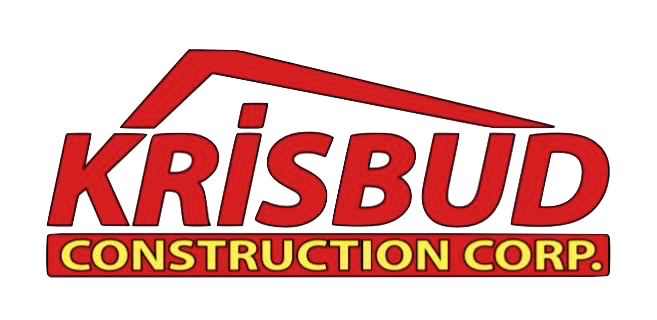What Causes Chimney Leaks in Chicago Homes? Common Issues and Fixes
Water dripping down your fireplace isn’t just a rainy-day nuisance—it’s your chimney waving a red flag. In Chicago, where masonry homes are exposed to lake-effect weather, freeze-thaw cycles, and decades of wear, chimney leaks are among the most common (and expensive) repairs homeowners face.
So if you’re asking yourself, “Why is my chimney leaking?”, you’re not alone—and you’re in the right place.
In this guide, we’ll break down the top causes of chimney leaks in Chicago homes, how to spot them early, and what repairs actually solve the problem long-term.
Why Chimney Leaks Are So Common in Chicago
Chicago homes, especially those built before the 1980s, typically have masonry chimneys—brick or stone structures built to last, but not invincible. And when you combine freeze-thaw damage, heavy rain, and aging materials with often neglected maintenance, you get the perfect storm for water infiltration.
Some issues begin at the top (literally), while others hide deep within the mortar joints or flashing. Unfortunately, many homeowners don’t realize they have a problem until water starts staining walls or ceilings inside the home.
Let’s dig into what’s really going on—and where that water’s coming from.
Signs You Might Have a Chimney Leak
A chimney leak doesn’t always announce itself with a splash. Sometimes, the symptoms are subtle—until they’re not.
Here’s what to look for:
Water stains on ceilings or walls near the fireplace
A musty odor or visible mold around your chimney breast
Dripping sounds inside the flue after rain
Peeling paint or discolored plaster near the chimney
Powdery white residue (efflorescence) on exterior bricks
If your roofer swears your roof is solid but the leak continues, your chimney is likely the real suspect.
The Most Common Causes of Chimney Leaks in Chicago
1. Cracked or Missing Chimney Crown
The chimney crown is the concrete slab at the very top of your chimney. It’s meant to shield the structure from rain and snow. But in Chicago’s freeze-thaw cycles, it often cracks—allowing water to seep directly into the flue or between masonry units.
Left unchecked, this causes internal moisture damage, brick spalling, and even structural shifting.
2. Damaged or Improper Chimney Flashing
Flashing is the metal sheet that seals the junction where your chimney meets the roof. If it’s installed poorly, starts to rust, or separates over time, water can slip behind it and travel deep into your attic or drywall.
This is one of the most common chimney code violations in Chicago noted by city inspectors—and also one of the most misdiagnosed as a “roof leak.”
3. No Chimney Cap (or a Broken One)
The chimney cap keeps rain, snow, and debris from falling directly into the flue. It also blocks animals, which can bring moisture and mess with them.
In older Chicago homes, many chimneys were built without caps. Others have caps that have rusted, loosened, or disappeared altogether in high winds. Without one, your chimney is wide open to the elements.
4. Deteriorating Mortar Joints and Bricks
Mortar is the glue holding your chimney together. But in this city? It gets battered by wind, snow, and cycles of freezing and thawing that slowly erode it.
When joints crack or crumble, water infiltrates the masonry. This leads to brick spalling, interior mold, and the eventual need for tuckpointing or full chimney restoration or repair.
5. Poor Chimney Construction or Lack of Maintenance
Some older chimneys were built without modern water-shedding features—like a flue liner, drip edge, or crown slope. Others may not have been maintained in decades, allowing small problems to balloon into serious leaks.
And if no one’s looked at your chimney in 10 years? Well, now’s the time.
Why Chimney Leaks in Chicago Get Worse Fast
The issue with masonry is this: once water gets in, it doesn’t stay still. It expands. It freezes. It weakens the building envelope from the inside out. Chicago’s wild temperature swings—especially in winter—make these problems worse than in many other U.S. cities.
What might start as a minor crack in the crown can soon become a full chimney rebuild project if moisture reaches the structural core.
How to Fix and Prevent Chimney Leaks in Chicago
The good news? Most chimney leaks are fixable. The even better news? Many can be prevented with regular inspections and the right materials.
Here’s what repairs typically involve:
Rebuilding or resealing the chimney crown using weather-resistant concrete
Replacing damaged flashing with new metal, properly sealed and woven into roofing layers
Installing a new chimney cap to block rain and wildlife
Tuckpointing cracked mortar joints with compatible materials
Applying a breathable water repellent (not a sealant that traps moisture)
Prevention is cheaper than repair. A yearly chimney inspection—especially after winter—can save you thousands in water damage remediation and structural fixes. Curious about what your chimney solution might cost? Visit our guide on the cost of chimney repair in Chicago.
Why Chicago Homeowners Trust Krisbud Construction
For over 20 years, Krisbud Construction has handled chimney inspections, flashing repair, cap installation, and full chimney rebuilds across Chicago’s neighborhoods. We understand the brick types, weather conditions, and common design flaws that lead to leaks here—because we’ve fixed them all.
When you work with us, you’re getting more than a patch job. You’re getting solutions built to last, crafted with the same attention we’d give our own homes. We’re your go-to chimney restoration and repair contractors in Chicago
Think You Have a Chimney Leak? Let’s Fix It Before It Gets Worse.
Water in your fireplace is never a good sign—but it doesn’t have to become a nightmare.
Contact Krisbud Construction - Chicago Masonry Contractors today for a free chimney inspection. We’ll assess the damage, explain your options, and fix the issue with no guesswork—just skilled masonry and honest service.
👉 Request Your Chimney Leak Inspection Today

